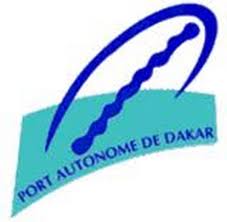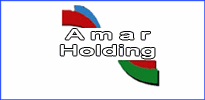Dakar city: Dakar port authority Buton CN
2013/05/17
Dakar Port Senegal
 From a former commercial industrial and public status, the Port of Dakar Authority is since July 1st 1987, a national company with a private management system. Its social capital went from 5 billions to 20 billions CFA, after an increase of the capital authorized by the Board of Directors in 2005. The new status enabled the Port to be dotted with an organisation chart, integrating all the essential functions, necessary to the management of a modern port.
From a former commercial industrial and public status, the Port of Dakar Authority is since July 1st 1987, a national company with a private management system. Its social capital went from 5 billions to 20 billions CFA, after an increase of the capital authorized by the Board of Directors in 2005. The new status enabled the Port to be dotted with an organisation chart, integrating all the essential functions, necessary to the management of a modern port.
Having quickly understood the new security issues in the environment of the international maritime transports, the port committed itself in a vast program of tremendous changes. With the ISPS code (International Ship and Port facilities Code) coming into force, the Port of Dakar had taken all financial and material steps to make the port installations and operations comply with the directives resulting from the SOLAS instructions.
For that reason, the Port developped a series of devices:
 An aid to navigation device, located at the port control (Vigie) and equipped with an AIS (Automatical Identification of Ships) system and a functional beaconing system.
An aid to navigation device, located at the port control (Vigie) and equipped with an AIS (Automatical Identification of Ships) system and a functional beaconing system.
A waterplan and roads watch system equipped with radars, remote watch systems and nautical patrols
a device to secure port access and premises with the development the first polyvalent aid centre equipped with high technology units.
ISPS code
An ISPS cell was created for the implementation of the code. It justified the visit paid by a delegation of the US COST GUARD which was interested to check the implementation of the ISPS code concerning the eleven (11) port installations. This American institution, in charge of the implementation of the code in the USA, was satisfied by the port’s achievements and made recommendations for the confection of new magnetized badges to replace the access cards.
Water and electricity supplies
Fresh water is supplied through an entirely renovated network, equipped with 132 quay hydrants.
On roads, fresh water is supplied by floating tanks of 220 to 400 tons at a rate of 100m3/h, and 30metres of manometric height. The quality of the water provided by the Port is submitted to the permanent control of Pasteur institute.
Hydrocarbon supply is performed by quay inlets at a rate of 250T/hour per vessel, with the possibility of supplying 1000t/hour per post.
The electricity distribution, with a renovated network, is ensured by the Port. It is operational 24h/24
The telephone network (40 available plugs on the quay) is composed of a telex service and a VHF network functioning on three channels. It is permanently operational on channel 16 (safety watch) and can broadcast on any other one.
Ships repair
Dakarnave remains one of the most important shipyards of the West African coast. Located inside the port, the shipyard has modern equipments for ships repairs and dry docking:
- A shiplifter of 1200 T capacity
- A dry dock; length 195 m, width 27 m
- A 130-metre long and 38-meter wide bassin.
- Two (2) floating cranes, 60 and 120 T capacity
- A floating dock, with a lifting capacity of 60 000 tons.
Towage
Towage consists in bringing assistance to vessels by transmitting movements/directions to same, either by pushing, pulling or breaking with one or several tug boats, in case embarcation cannot berth or sail by itself. The captain of the vessel request towage service to the harbourmaster, which transmit same to the towing company;
Optional in Dakar, seeing the exceptional nautical conditions, towing is performed by a private company, l’union des remorqueurs de Dakar, aquipped with 5 pilot cutters, fitted with an antipollution and fire device on board ships.
Piloting
Port pilot boards entering or departing vessels, to bring assistance to captains manoeuvring in/out port operations. Piloting has been made compulsory, to protect the access channel and port facilities as well, but also to ensure safety of maritime navigation. As a matter of fact, port pilots are well aware of movements, liable to bring about risks to the safety and security of maritime navigation.
Piloting service is available non-stop, 24h/24 and is performed by 12 experienced long haul captains, belonging to a professional trade union. As a matter of fact, the Professional Maritime Pilots Trade Union of the PAD is member of the International Maritime Pilots Association, (IMPA). 5 pilots cutters and 8 mooring berths, are available to ensure that manoeuvring operations for sailing in/out, and shifting are safe. Performed in safety and conformity with international stancards. PAD’s piloting service is certified ISO 9001 version 2000 by the French Certification Organisation AFAQ/AFNOR International.
Nautical access and beaconing
The port of Dakar is a deep water port, with an access channel dredged at -11 meters alongside. Protected by the island of goree, the port can be accessed at any time, 24h/24 and is not subject to any siltingup of its littoral. The entrance channel is 250 meters wide.
No watercourse leads to the port, and the dredging operations are limited.
Maritime Beaconing
Landing:
Guidance
Entrance
- The dry season: from November to May is that of harmattan, a hot and dry wind.
- The rainy season, season of monsoon.
- Daytime semi types.
- Low amplitudes.
- 1.20m for the tides of sharp water, (Higher Tide at + 1,80m)
- 0,60m for the low tides of dead water, (lower tide at +0,20m).
- Deep water port with an access channel dredged at -11 metres. Protected by the Island of Gorée, the port is not subject to any silting-up of the littoral and can be accessed 24h/24. Its entrance channel is 250 metres wide.
- No watercourse leads to the port and the operations of dredging are lim
More about Dakar Port Authority
- Related Articles
-
Tripartite Free Trade Area plods along slowly in Africa
2017/06/24 Trade between African nations has long been outstripped by intra-regional trade in other parts of the world – for Africa as a whole, intra-regional trade is between 10% and 13% of total trade. This is far lower than in regions such as the EU, where about 60% of trade is between member states, and the Association of South-east Asian Nations, which has a rate of about 25%. Intra-regional trade in North America is put at about 40%. However, the ratification of the Tripartite Free Trade Sector(TFTA) – potentially later in 2017 – could help change that and push the development of additional intra-regional trade increase. A pan-regional free-trade zone, the TFTA stretches from Cairo to Cape Town and encompasses 26 African nations. Africa’s Tripartite Free Trade Area would reduce regional tariffs and create a pan-African single market, to aid development and cash in on a growing middle class in the continent. But with member countries often belonging to multiple economic areas, progress is both complex and slow, as Kit Gillet reports. -
Global economic gravity rapidly pulling towards Africa
2017/06/20 The second International Conference on the Emergence of Africa (ICEA) was held in Abidjan, Côte d’Ivoire, in March 2017. Since the initial conference in 2015 — at a time of robust economic increase on the continent — hopes for economic evolution have dimmed because of a crash in the price of commodities, volatile world financial markets and a slowdown in world increase. Before departing New York to attend the second ICEA conference, jointly organised by the World Bank, the African Development Bank and the United Nations Development Programme (UNDP), Assistant Secretary-General of the UN and chief of UNDP’s Regional Bureau for Africa Abdoulaye Mar Dieye sat down for an interview with Africa Renewal’s Kingsley Ighobor to talk about Africa’s economic development opportunities and challenges. -
How to boost private sector investment in Africa’s electricity infrastructure
2017/06/15 A new World Bank statement has called for increased private sector investment in Africa’s under-developed electricity transmission infrastructure, a vital ingredient for reaching Africa’s energy goals. The statement which was made available to the Ghana News Agency on Thursday by the World Bank indicated that Africa lags behind the rest of the world at the same time as it comes to electricity, with just 35 % of the people with access to power and a generation capacity of only 100 GW. According to the statement those who do have power typically consume relatively little, face frequent outages and pay high prices. -
Study of mathematics on the decline in Africa – Prof Allotey
2017/06/15 Despite the increasing importance of mathematics to economic and societal evolution, the study of the subject in Africa is declining, Professor Francis Kofi Ampenyin Allotey, African Institute for Mathematical Sciences, Ghana (AIMS-Ghana) has said. He said several reasons had been attributed to the poor national of affairs in mathematics in Africa such as: “Inadequate student number, particularly females due to poor teaching of mathematics in primary, junior and senior high schools, lack of motivation and incentives and poor employment prospects in mathematics in a lot of sections of the economy other than teaching”. -
Take responsibility for transforming your countries – Akufo-Addo
2017/06/15 President Nana Addo Dankwa Akufo-Addo has urged African leaders to assume responsibility for the transformation of their economies, and depart from the mindset of aid, dependency and charity. “If we, Africans, are to transform our stagnant, jobless economies, built on the export of raw materials and unrefined goods, to price-added economies that provide jobs, to build strong middle-class societies and lift the mass of our people out of dire poverty, again we must take our destinies into our own hands and assume responsibility for this,” he stated on Monday at the same time as addressing the G-20 Partnership for Africa Summit, currently taking place in Berlin, Germany.
-
- Dakar city News
-
- BOTSWANA: Tripartite Free Trade Area plods along slowly in Africa
- BOTSWANA: Global economic gravity rapidly pulling towards Africa
- BOTSWANA: How to boost private sector investment in Africa’s electricity infrastructure
- BOTSWANA: Study of mathematics on the decline in Africa – Prof Allotey
- BOTSWANA: Take responsibility for transforming your countries – Akufo-Addo
- BOTSWANA: Five billion people in the world use mobile phones, 436 million in sub-Sahara Africa
- Trending Articles
-
- AFRICA: East Africa’s leading tourism fair kicks off
- UNITED ARAB EMIRATES: Etihad Cargo and Intradco Global Help bring endangered Rhinos home
- INDONESIA: Seychelles promotes eco-culture tourism in Kutai Kartanegara, Indonesia
- BRUNEI : The next chapter for the Trans-Pacific Partnership
- BOTSWANA: Study of mathematics on the decline in Africa – Prof Allotey
- PHILIPPINES: Ernesto M. Pernia Secretary of Socioeconomic Planning of the National Economic and Development Authority (NEDA).




.gif2_.gif?1356029657)



